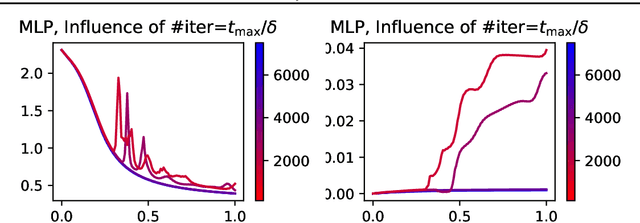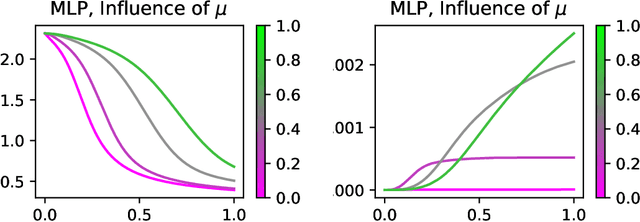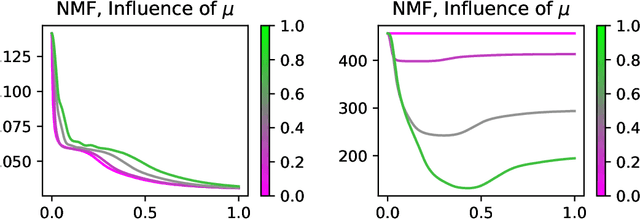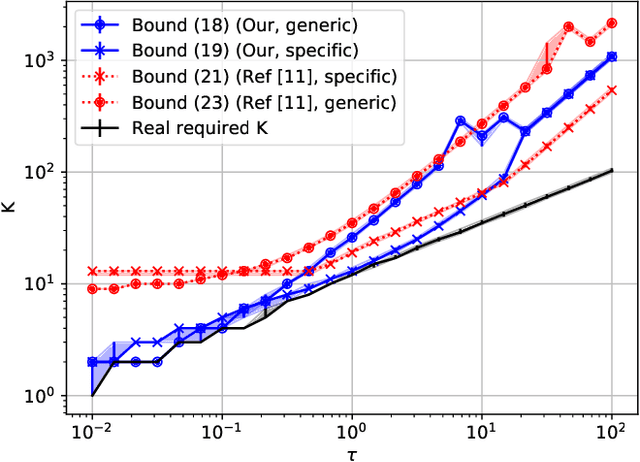Sibylle Marcotte
Keep the Momentum: Conservation Laws beyond Euclidean Gradient Flows
May 21, 2024



Abstract:Conservation laws are well-established in the context of Euclidean gradient flow dynamics, notably for linear or ReLU neural network training. Yet, their existence and principles for non-Euclidean geometries and momentum-based dynamics remain largely unknown. In this paper, we characterize "all" conservation laws in this general setting. In stark contrast to the case of gradient flows, we prove that the conservation laws for momentum-based dynamics exhibit temporal dependence. Additionally, we often observe a "conservation loss" when transitioning from gradient flow to momentum dynamics. Specifically, for linear networks, our framework allows us to identify all momentum conservation laws, which are less numerous than in the gradient flow case except in sufficiently over-parameterized regimes. With ReLU networks, no conservation law remains. This phenomenon also manifests in non-Euclidean metrics, used e.g. for Nonnegative Matrix Factorization (NMF): all conservation laws can be determined in the gradient flow context, yet none persists in the momentum case.
Abide by the Law and Follow the Flow: Conservation Laws for Gradient Flows
Jun 30, 2023Abstract:Understanding the geometric properties of gradient descent dynamics is a key ingredient in deciphering the recent success of very large machine learning models. A striking observation is that trained over-parameterized models retain some properties of the optimization initialization. This "implicit bias" is believed to be responsible for some favorable properties of the trained models and could explain their good generalization properties. The purpose of this article is threefold. First, we rigorously expose the definition and basic properties of "conservation laws", which are maximal sets of independent quantities conserved during gradient flows of a given model (e.g. of a ReLU network with a given architecture) with any training data and any loss. Then we explain how to find the exact number of these quantities by performing finite-dimensional algebraic manipulations on the Lie algebra generated by the Jacobian of the model. Finally, we provide algorithms (implemented in SageMath) to: a) compute a family of polynomial laws; b) compute the number of (not necessarily polynomial) conservation laws. We provide showcase examples that we fully work out theoretically. Besides, applying the two algorithms confirms for a number of ReLU network architectures that all known laws are recovered by the algorithm, and that there are no other laws. Such computational tools pave the way to understanding desirable properties of optimization initialization in large machine learning models.
Fast Multiscale Diffusion on Graphs
Apr 29, 2021
Abstract:Diffusing a graph signal at multiple scales requires computing the action of the exponential of several multiples of the Laplacian matrix. We tighten a bound on the approximation error of truncated Chebyshev polynomial approximations of the exponential, hence significantly improving a priori estimates of the polynomial order for a prescribed error. We further exploit properties of these approximations to factorize the computation of the action of the diffusion operator over multiple scales, thus reducing drastically its computational cost.
 Add to Chrome
Add to Chrome Add to Firefox
Add to Firefox Add to Edge
Add to Edge